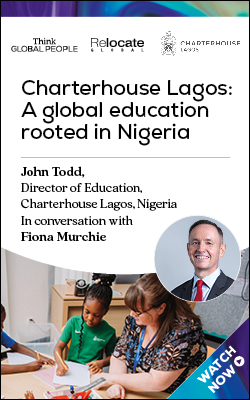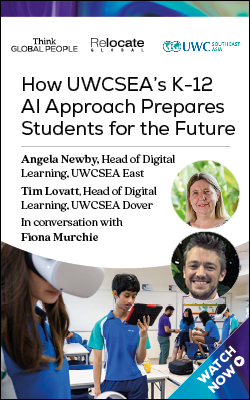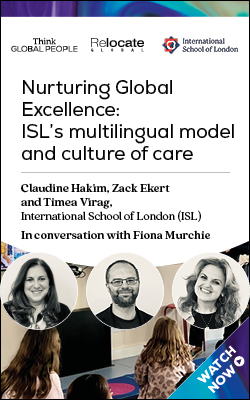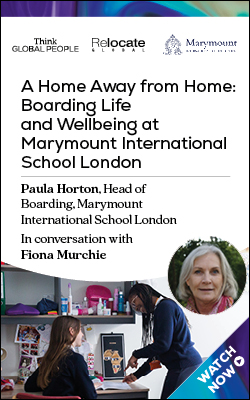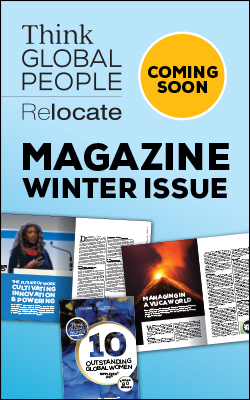Sixteen is the crucial age to encourage young women to pursue STEM
Women have worked on some of the world’s most important scientific discoveries and advances.

The Move to Further Education
At Cambridge Assessment International Education, we have released new data reinforcing that the run-up to post-16 education is the crucial moment to encourage new generations of female scientists, engineers, programmers and mathematicians. While male and female students perform equally during IGCSEs, there remains a disconnect between what they choose to study post-16.For example, while studying Cambridge IGCSE Computer Science, male and female students have historically achieved equal success on both the programming task, similar to coursework, and the examination. Any stereotypes formed about the type of student who succeeds at these courses are quickly broken when considering the equality of the results students achieve in their exams. The challenge is encouraging young women to overcome the stereotypes about science and maths and choose these courses in the first place.Globally, nearly two thirds of male and female students take Cambridge’s STEM courses at IGCSE. Yet, at A Level, when many have the choice of which three or four subjects they want to focus their studies on, we see quite a drop in the number of STEM subject entries by women. Many female students choose to focus on other A Level subjects, while the proportion of male students studying STEM remains steady. The situation does vary country to country, but the international outlook shows there is still a way to go before young women pursue STEM A Levels in equal numbers to young men.
Better Representation
The past year has shown us more than ever before, the huge importance of having a global workforce of well qualified experts working in scientific and mathematical fields. As the Covid-19 pandemic swept across the world, we have all depended heavily upon these experts to treat those falling ill from the virus; to map the spread of the virus; to analyse how it affects individuals of different ages and different ethnicity; to develop vaccines; and to monitor new variants, amongst other things. We must continue to attract the best minds to study maths and science beyond IGCSE, regardless of gender.Better gender representation could help for a number of reasons. When young women see people like them achieving success in STEM fields, they are more likely to aspire to careers in STEM and choose STEM throughout their educational journey and ultimately, they can overcome damaging stereotypes and anxieties. Representation shows women that following their strengths and passions will lead to success.Globally, teachers and parents have always been the most immediate role models, advocates and sources of encouragement to young people who may not have considered following a STEM path previously. To help these crucial early-stage role models, there has been a large-scale and welcome push from businesses in recent years to hire more women and promote diverse female representation in science in global media and television programmes.Encouragingly, female representation is improving year on year, pointing to a bright future for the global workforce. The number of women graduating in core STEM subjects has grown from 22,020 in 2015 to 24,000 in 2018 in the UK. However, we mustn’t be lulled into a false sense of security. There’s still work to be done before we get to the stage where the numbers of both genders studying science and maths subjects at higher education and university level achieve parity.Taking Lessons to the Real World
We recently asked Dame Athene Donald, Master of Churchill College and Professor of Experimental Physics, to share the best ways to make the most of this crucial moment between pre and post-16 study.She told us that early work experience choices for young women can often be the deciding factor behind pursuing STEM in the long-term. Working for two weeks for a natural science museum, in wildlife conservation, a university research lab, a vet’s practice or in an industrial setting, provides context to lab classes. Seeing adults succeeding in science workplaces can transform young women’s perspectives of a career in STEM.In addition, Cambridge International provides opportunities beyond the classroom for students to apply the skills they have learnt in STEM lessons. Although last year’s competition was placed on hold due to Covid-19, our global, Cambridge Upper Secondary Science Competition attracted many entries in 2019 from a mix of students in different countries. It was won by a mixed gender team from Jayshree Periwal International School in India.By recognising and rewarding keen applications of science to real world situations, students of all genders can feel that their future in science is a worthwhile pursuit and will be encouraged to continue their studies.Ensuring STEM Syllabuses are Interesting and Balanced
We recognise that the content of our syllabuses plays an important part in whether young people choose to continue studying particular subjects beyond IGCSE. Designing interesting maths and science syllabuses, which incorporate a range of topics that can be explored in depth at A Level and help students to develop core skills, is really important if we want to encourage more young people, across both genders, to study STEM courses beyond 16, and attract them into STEM careers.Making choices about what to study post 16, is often the first point at which young women feel empowered to choose a STEM pathway, as the right courses offer a rewarding mix of challenge and satisfaction. Since 2009, there have been more than two million entries from young women across the world for Cambridge IGCSE STEM courses, and they represent about 30% of total entries across all subjects. Rigorous IGCSE and A Level courses and globally recognised assessments help prepare students for bright careers in science and mathematics.It is also important that we ensure assessments for our qualifications provide equal opportunities to achieve for all students – regardless of background or gender. When we develop exam papers for international students, we ensure the content is fair, can be understood universally, and that it avoids bias and cultural differences. Making sure we use neutral context settings within papers is really important so that any scenarios and questions are as relatable and appropriate for all students.Success for All
In order for us all to continue to advance and develop new global technologies and innovations in every industry sector, we need to continue to educate and encourage the best scientists and mathematicians. It is therefore essential that we continue to encourage young people, both male and female, to study STEM courses beyond 16 and attract them to pursue STEM careers in the future.At Cambridge International we recognise there is still a gap between the number of female students taking STEM courses post 16, and their male peers. It is therefore vital that we continue to do everything we can to break down any long standing stereotypes associated with STEM subjects at A Level and encourage more young women to choose these subjects.We can do this in many ways, from recognising and rewarding young scientists; encouraging work experience placements in STEM fields; promoting the work of successful women scientists and mathematicians; and by ensuring STEM qualifications remain interesting, relevant and an attractive choice for all students regardless of their gender.©2025 Re:locate magazine, published by Profile Locations, Spray Hill, Hastings Road, Lamberhurst, Kent TN3 8JB. All rights reserved. This publication (or any part thereof) may not be reproduced in any form without the prior written permission of Profile Locations. Profile Locations accepts no liability for the accuracy of the contents or any opinions expressed herein.












